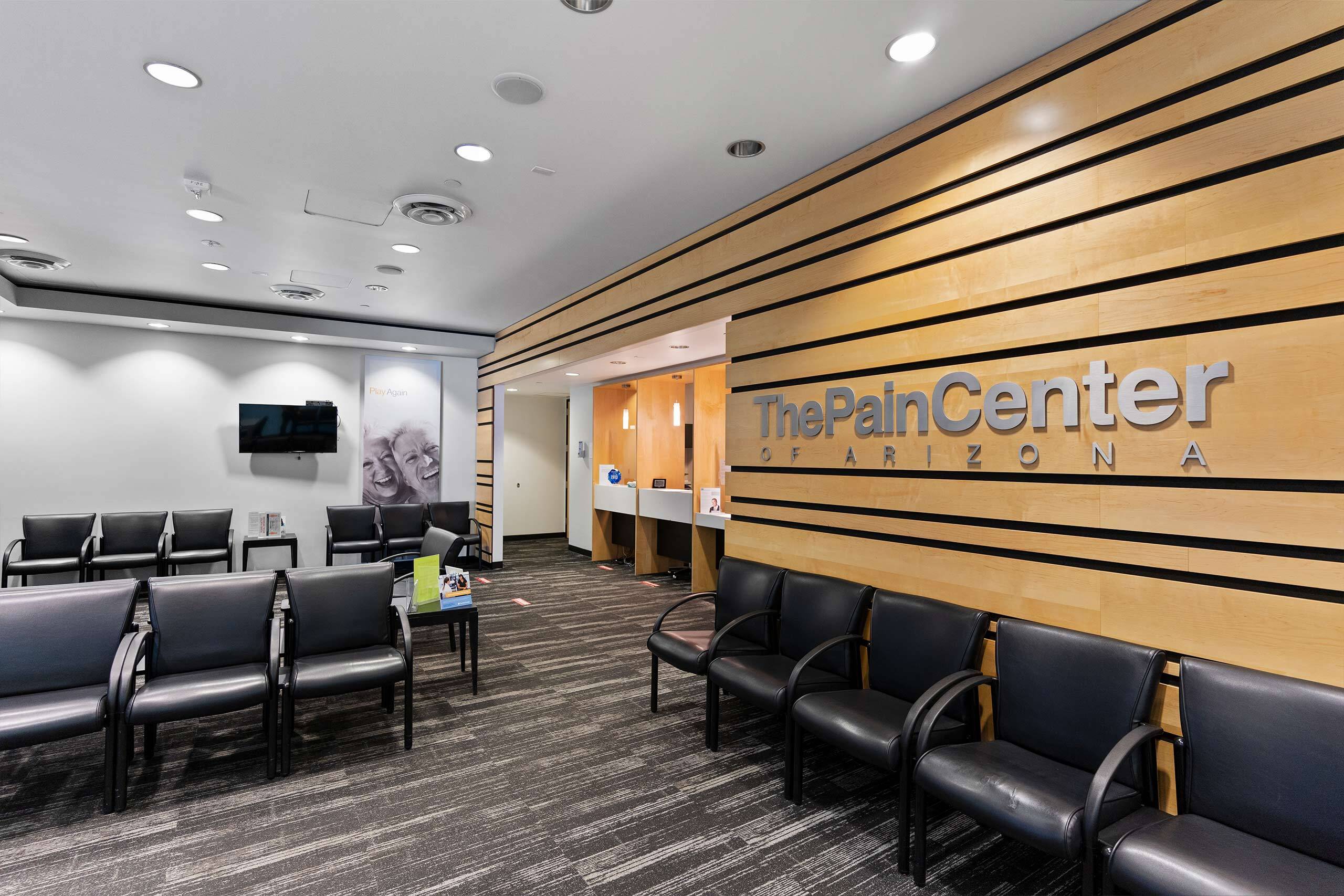Sciatic Nerve Block
A sciatic nerve block is an injection therapy that alleviates pain caused by damage to sciatic nerve, or sciatica. Much like other injection procedures and nerve blocks, a sciatic nerve block requires the use of fluoroscopy and a contrast dye to correctly locate and inject pain medication. Patients may experience several days, weeks or months of pain relief due from a sciatic nerve block.


What is Sciatic Nerve Block?
A sciatic nerve block is an injection therapy that alleviates pain caused by damage to your sciatic nerve, or sciatica.
What Types of Pain Does Sciatic Nerve Block Treat?
Lower back pain caused by sciatica.
What is sciatica?
Sciatica is damage to your sciatic nerve that produces symptoms such as:
- Weakness in legs/feet
- Burning sensation
- Back leg pain from sitting
- Shooting pain
How is a sciatic nerve damaged?
Sciatic nerves can be injured by:
- Degenerative disc disease
- Herniated discs
- Compression fracture
- Osteoporosis
- Spinal stenosis
- Spinal tumors
How Does a Sciatic Nerve Block Work?
Much like other injection procedures and nerve blocks, a sciatic nerve block requires the use of fluoroscopy and a contrast dye to correctly locate and inject pain medication.

Expectations and Recovery
A sciatic nerve block injection itself is pretty painless as the effects of the injection are normally immediate. The medication kicks in pretty quickly, giving you immediate pain relief.
Patients may experience several days, weeks, or months of pain relief due to a sciatic nerve block.
What Causes Chronic Back Pain?
Oftentimes, spinal issues typically cause only back pain. It could be caused by simply a muscle strain or other muscular problems, but there’s a wide range of possible causes, including:
- Ligament strain
- Herniated or ruptured discs
- Arthritis
- Fibromyalgia
- Skeletal structure problems, including bone fractures or bone spurs
- Osteoporosis
Other ways you can damage your spine include poor posture, improperly lifting heavy objects, and lack of exercise. Damage can even result from illness, which is rare.
What Symptoms of Back Pain Should I Watch Out For?
Acute back pain typically lasts up to three months, whereas chronic pain lasts longer. Report all your symptoms to your doctor, especially acute or chronic back pain symptoms such as:
- Muscle ache
- Shooting, stabbing, or dull pain
- Pain radiating toward the neck or down the legs
- Decreased range of motion and flexibility
- Pain reduction with rest or minimal movement
Other Conservative Treatments for Chronic Back Pain
Other procedures typically performed to treat chronic back pain include:
- Epidural Steroid Injections
- For short-term pain relief (typically 3-4 months), steroid injections can be used to treat back and neck pain, and can be combined with physical therapy and exercise for maximum benefit.
- Radiofrequency Ablation (Rhizotomy)
- A minimally invasive procedure in the neck, middle or lower back, that destroys nerve fibers in the back that carry pain signals. It is performed under fluoroscopy (live x-ray).
- Spinal Cord Stimulation
- If other therapies aren’t effective for treating your pain, an implantable pain management device can be an option. These devices administer mild electrical pulses to block the transmission of pain.


Get the care you need within 24 hours*
We know when you’re looking for relief for your chronic pain, you can’t wait any longer than you already have. This is why we can schedule you with an appointment within 24 hours at most of our pain centers across the Valley, so you can start your journey to life-long pain relief as soon as tomorrow.



